In the closed state - the cabinet, in the disclosed - the office. Very convenient and saves a place. Materials used, sizes, assembly scheme.
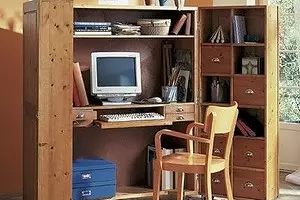
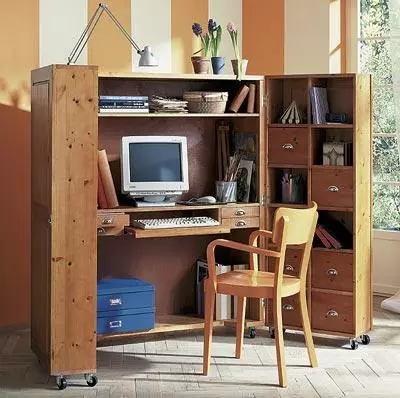
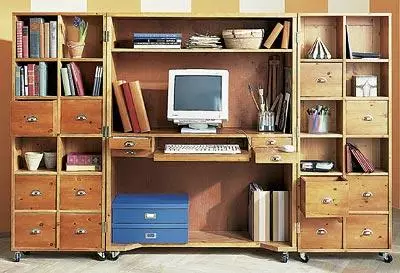
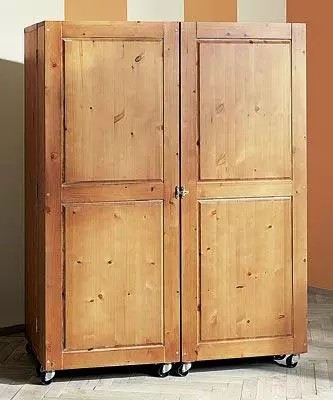
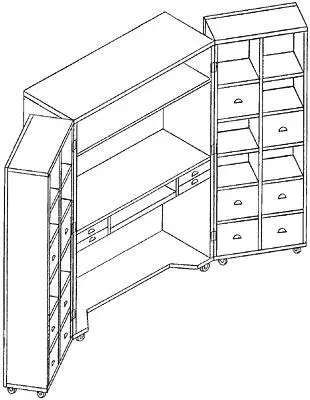
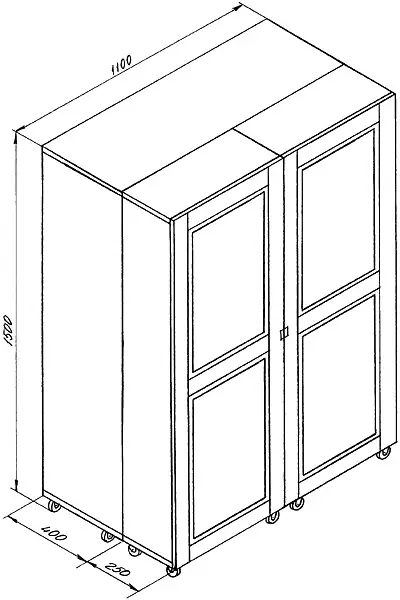
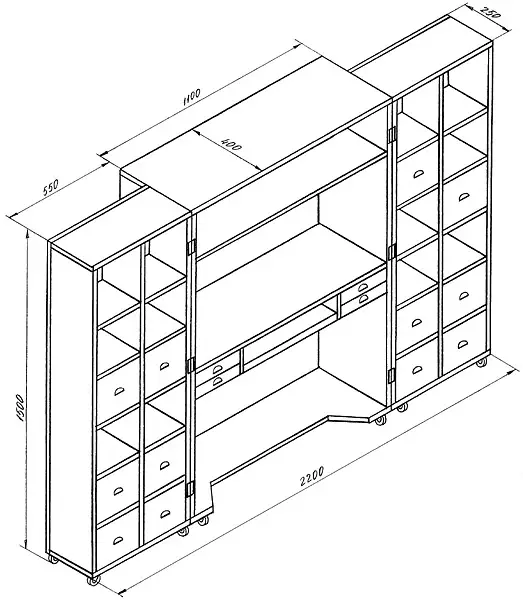
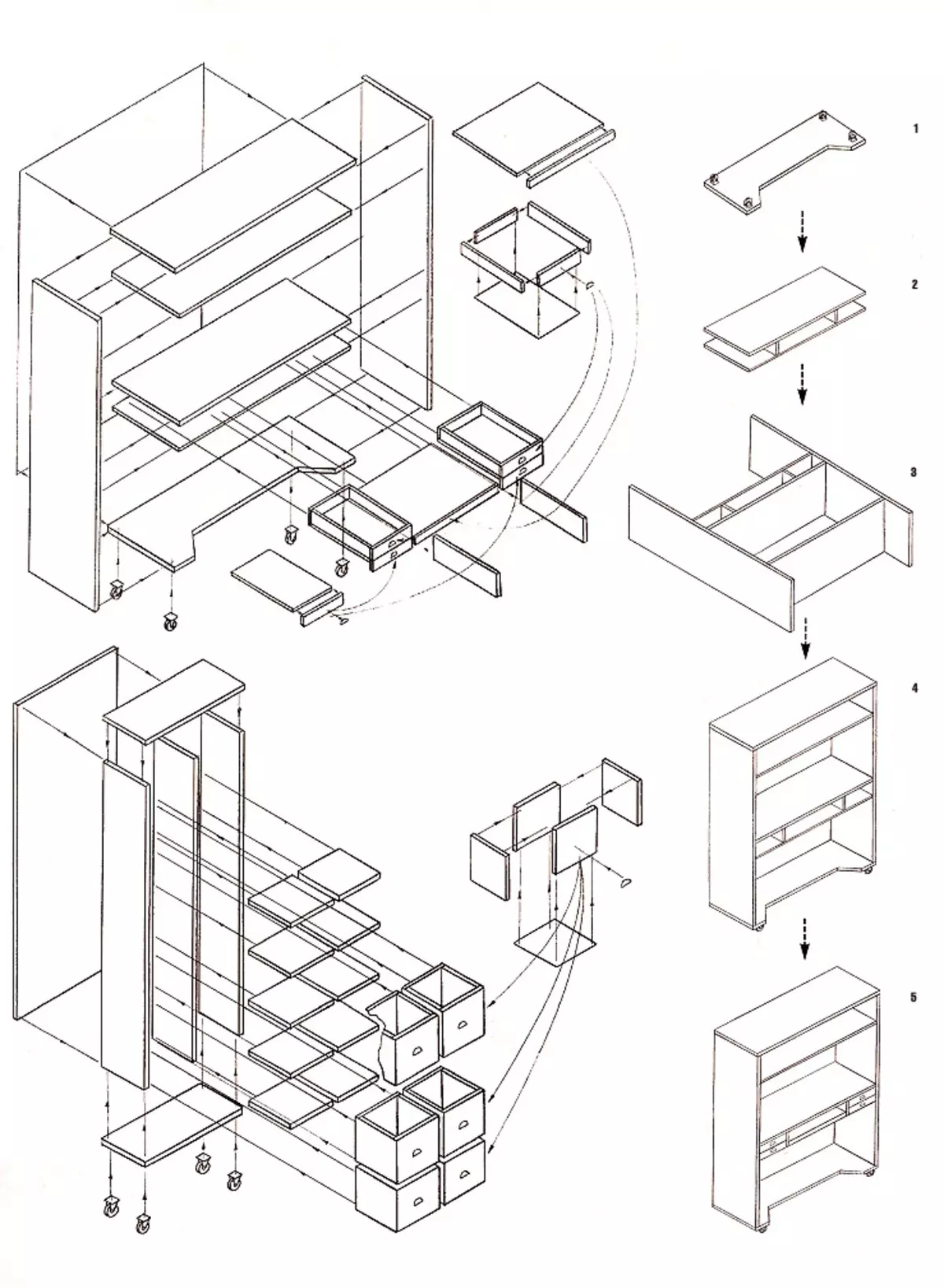
The option to your attention allows you to locate a personal computer in the central section, and on the retractable planes, the keyboard, mouse, work paper.
Other options for such folding furniture: workplace for children and adolescents or a place where you can install, for example, a music center, and on the side sections- store cassettes and discs
The presented furniture from the point of view of the functional purpose is the folding workplace for the house. Moreover, one of the options for such a workplace is depicted. You can come up with your option that is most suitable for its intended purpose and on the overall sizes and size of the components (boxes, shelves, etc.).
As a material for the manufacture of this folding furniture, use wooden panels made of natural wood or wood-chipboard (chipboard). Chipboard due to its toxicity must have a coating in the form of phans or films under a tree. The rear wall of the central section and the bottom of all boxes should be made from plywood or organita (pressed cardboard).
If the rear wall of the organity, then the front side for aesthetics is better to crack the film under the tree. The rear wall of the side sections is simultaneously facial in the folded version of the furniture. If it is made of a wooden panel, it increases the rigidity of the side section.
Fasteners can be the most diverse - from wooden pins on the glue to special fasteners (screws, screws, sleeves, corners, pins, etc.). The main thing when choosing and installing the fastener is to be reliable, rigid and durable, and fasteners from the front surfaces are invisible.
Special attention when installing fasteners pays its markup, as it will depend on this parallelism of the planes, the absence of gaps, angle 90 between the panels, etc. That is, "death seven times, once installed fasteners."
Fastening the walls of plywood or organity is better to do with small screws, and not nails. Screws exclude the appearance of gaps and slots as furniture exploit. The distance between the screws (step) for drawers should be less than for the walls.
Creating the option you need, remember some principles
- When there is a monitor, music center and other electronics on the table, remember the necessary gaps from behind and from above to provide ventilation and cooling.
- It is not recommended to do the central section above 150cm again due to stability. If you need a higher central section, then it is more reliable to attach it to the wall. It will be lost the opportunity to move it on the rollers.
- The wooden panel, which serves as a table lid, must be securely fixed to the side vertical panels of the central section. Then the table can be installed on the table: monitor, system unit from a computer or, for example, a music center.
- The depth of the central section should not be small. It is necessary for the stability of the design and placement on the table of all necessary.
- The shelves of all sections are desirable to fix for vertical wooden panels, and not just put them on the shelf (pins or brackets under the shelf).
- Rollers that are attached four pieces to the bottom of the central and side sections must be swivel around the vertical axis of the furniture. They should be able to ride in arbitrary trajectories when folding - laying up furniture or move it in a folded position.
- It is desirable that one of the side section rollers have a fixer that prevents it with rotation: it will be possible to fix the open side section in the most convenient position in relation to the central section.
- Swivel rollers are attached to the bottom panel closer to the corners to ensure the stability of the central section and the entire structure as a whole.
- Boxes and retractable planes located under the cover of the table should not be over the edge of the table and side vertical section panels to provide the ability to fold furniture. Similarly, the requirement to the retractable elements of the side sections.
- Handles on drawers and retractable planes should fall into the free space of the adjacent section so that the furniture can be folded. Consider the location of the handles in relation to the computer monitor.
- The retractable plane under the table is preferably provided with a limiter eliminating random falling when they are too sharply extension.
- Side sections should not be done too deep, because after filling in papers, books and other objects, they can become very heavy and it will be difficult to fold and spread the furniture. Now, the depth must be sufficient (15-30 cm), for greater stability of sections.
Furniture manufacturing and assembly technology
- Cut the wooden panels according to your furniture option, partially installing fasteners on the panels (the remaining part - when assembling).
- Implement the assembly on the smooth floor so as not to damage and not scratch the wooden panels.
- Each section assembling in a horizontal position (section "Lies" on the floor), connecting horizontal wooden panels with vertical. Moreover, the central section lies face down (it will be more convenient to fix the rear wall).
- Before installing with the help of the kitchen, set the angle 90 between vertical and horizontal panels (until the rear wall is fixed, the collected section has some mobility).
- Mounting rollers, assembling boxes and retractable planes separately.
- Then raise the section to the vertical position, set the boxes and retractable planes.
- Make the side section assembly similarly, but the front side up, as the rear panel must be fastened from the inside with the help of special fasteners.
- Raise the sections, install the boxes.
- Connect all three sections with each other with a loop. Install the handles on the side sections.
